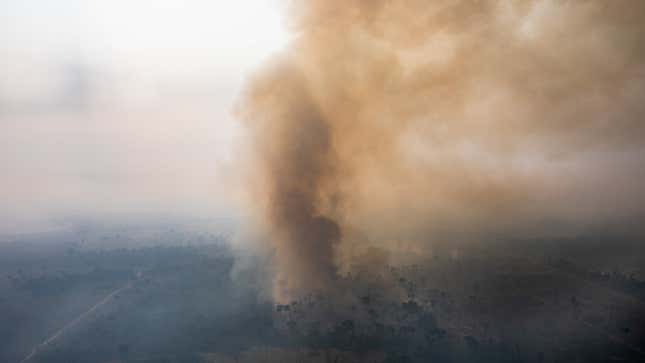
In September, fires in the Amazon Rainforest dropped dramatically both compared to the number of fires the region saw in 2018 and from the outburst of flames the rainforest saw in August.
The State Secretariat for the Environment of Brazil (SEMA) released an announcement Tuesday that the state of Amazonas, which is covered by the Amazon Rainforest, saw a 39 percent reduction in hot spots last month compared to September 2018. There were 3,026 total fires in September 2019. Compared to the number of fires raging in August, the number of fires in September reduced by 55 percent, according to data from the National Institute for Space Research (INPE).
Still, while this state covers a large portion of the Brazilian Amazon, some of the rainforest also sits in the states of Para, Mato Grosso, Acre, and Rondônia, as well as within the borders of Bolivia, Peru, Colombia, Venezuela, Ecuador, Guyana, Suriname, and French Guiana. In Brazil, however, most of the states that are home to the Amazon saw a reduction in their number of fires. Only Mato Grosso saw an increase. In that state—which is home to the Xingu Indigenous Park where some 16 tribes reside—the number of fires grew by 34 percent compared to August. The forest’s indigenous people are particularly at risk in the face of fires as they depend on the Amazon’s natural resources for food, medicine, and shelter. Meanwhile, other states closer to and on Brazil’s eastern coast saw the number of fires in non-Amazon forests double and in some cases, even quadruple between August and September.
These fires aren’t natural or wild. They’re manmade fires set by loggers and ranchers illegally cutting down trees and then burning them to convert the land to pastures for cattle and eventually illegally sell to soy farmers. Brazilian authorities said the reduction in the number of fires is due to better enforcement operations by the Brazilian Army, SEMA, and Amazon Environmental Research Institute (IPAM) among others, and which only came after international pressure reached a boiling point. This is likely the case, Paulo Moutinho, a senior scientist at IPAM, told Earther, but rain also likely helped put out some fires.
“I could say there is a combination of—at least—two factors explaining this reduction: It’s already raining in some areas that were burning weeks ago and the inhibitory effect related to the presence of the army in the region,” he wrote in an email.
The institute is currently working on figuring out how much of the reduction is attributable to each of these factors and if some other factors may be at play. Scientists are analyzing the precipitation data and comparing it to the number of fires as well as the army’s presence in regions to find out the impacts either had on the drop in the number of blazes.
“It’s not easy to say, at least for now, which one was more important in promoting the reduction in the number of fire spots,” Moutinho said.
While fewer fires are good news for people’s lungs and the forest in general, that doesn’t mean deforestation has stopped in the Amazon. The data from INPE Moutinho’s team analyzed shows as much. People have continued to illegally chop down trees, they’ve just stopped burning them.
That means the Amazon deforestation crisis continues. Not only does it harbor unique life and peoples with invaluable ancient knowledge; it stores carbon that benefits the whole planet. With the climate crisis growing more urgent, we all lose if we lose the Amazon.